Phylogeny of Carpha and related genera (Schoeneae, Cyperaceae) inferred from morphological and molecular data
Xiufu Zhang A C , Jeremy J. Bruhl A , Karen L. Wilson B and Adam Marchant BA Botany, Centre for Ecology, Evolution and Systematics, The University of New England, Armidale, NSW 2351, Australia.
B National Herbarium of NSW, Royal Botanic Gardens Sydney, Mrs Macquaries Road, Sydney, NSW 2000, Australia.
C Corresponding author. Email: xiufu_zhang@hotmail.com
Australian Systematic Botany 20(2) 93-106 https://doi.org/10.1071/SB06023
Submitted: 11 July 2006 Accepted: 26 October 2006 Published: 26 April 2007
Abstract
The limits, definitions and relationships of Carpha have been controversial and unclear. This study using cladistic analyses of morphological and combined morphological and molecular data indicates that: (1) Carpha sensu latu is paraphyletic and its species form two clades, consistent with the definitions of Carpha sensu stricto and Asterochaete respectively (i.e. the data support the division of Carpha sensu latu into two genera: Carpha sensu stricto and Asterochaete); (2) the morphological data show a high degree of homoplasy within Schoeneae; (3) Schoeneae is not a monophyletic tribe; (4) Schoenus and Tricostularia are polyphyletic; (5) it is better to place Schoenoides back in Oreobolus; (6) separation of Capeobolus brevicaulis from Costularia or Tetraria is supported; and (7) both genera Costularia and Tetraria should be maintained. The study resolves some phylogenetic relationships between Carpha and its relatives. Many aspects of these relationships are in agreement with previous studies, but some of these relationships have no support. The study also resolves the phylogenetic relationships of species of Carpha, although with lack of support for some clades, highlighting the need for other sources of data.
Acknowledgements
This study was undertaken while the first author was the recipient of an Overseas Postgraduate Research Scholarship and a University of New England (UNE) Research Scholarship. The authors thank Associate Professor N. Prakash (UNE) and three anonymous referees for their valuable comments, Dr Jin Li (UNE and CSIRO Sustainable Ecosystems) for help in dealing with statistical issues, and the directors and staff of B, BM, BOL, CANB, EA, HO, K, MEL, MO, NSW, NU, NY, P, PRE and Z for access to collections and/or loans. The first author also acknowledges financial support from N.C.W. Beadle Fund (Botany, UNE), Dame Bridget Ogilvie Research and Travelling Scholarships for Postgraduate Women, Joyce W. Vickery Scientific Research Fund (Linnean Society of New South Wales), and Student Travel Scholarship of UNE Academic Womens’s Association.
Archer C,
Browning J, Gordon-Gray KD
(1997) Studies in Cyperaceae in southern Africa 31: a third species of Cyathocoma, C. bachmannii. South African Journal of Botany 63, 167–171.
and Zhang et al. (2006)
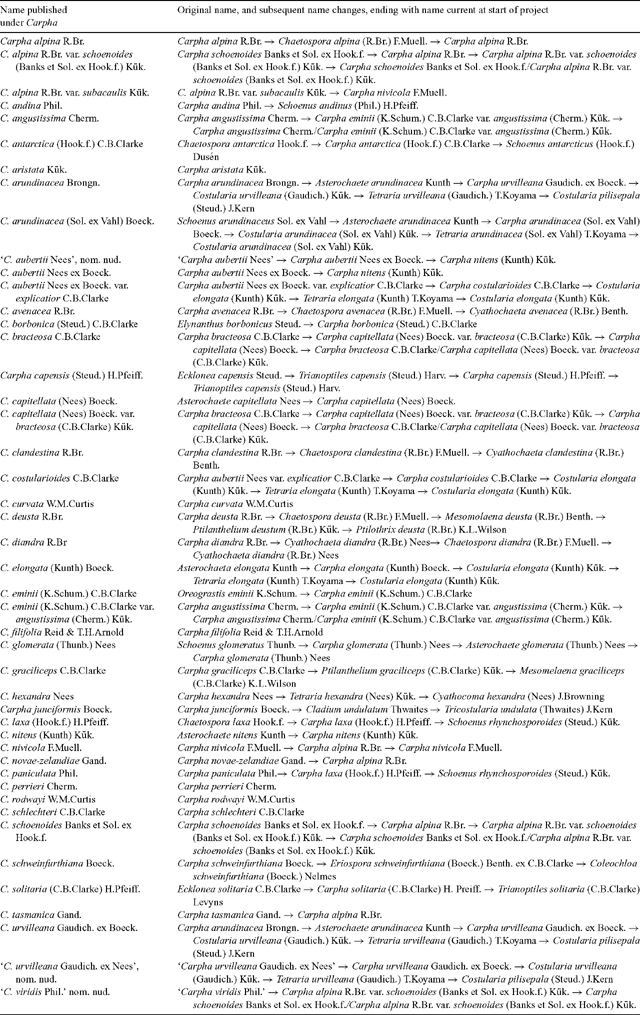
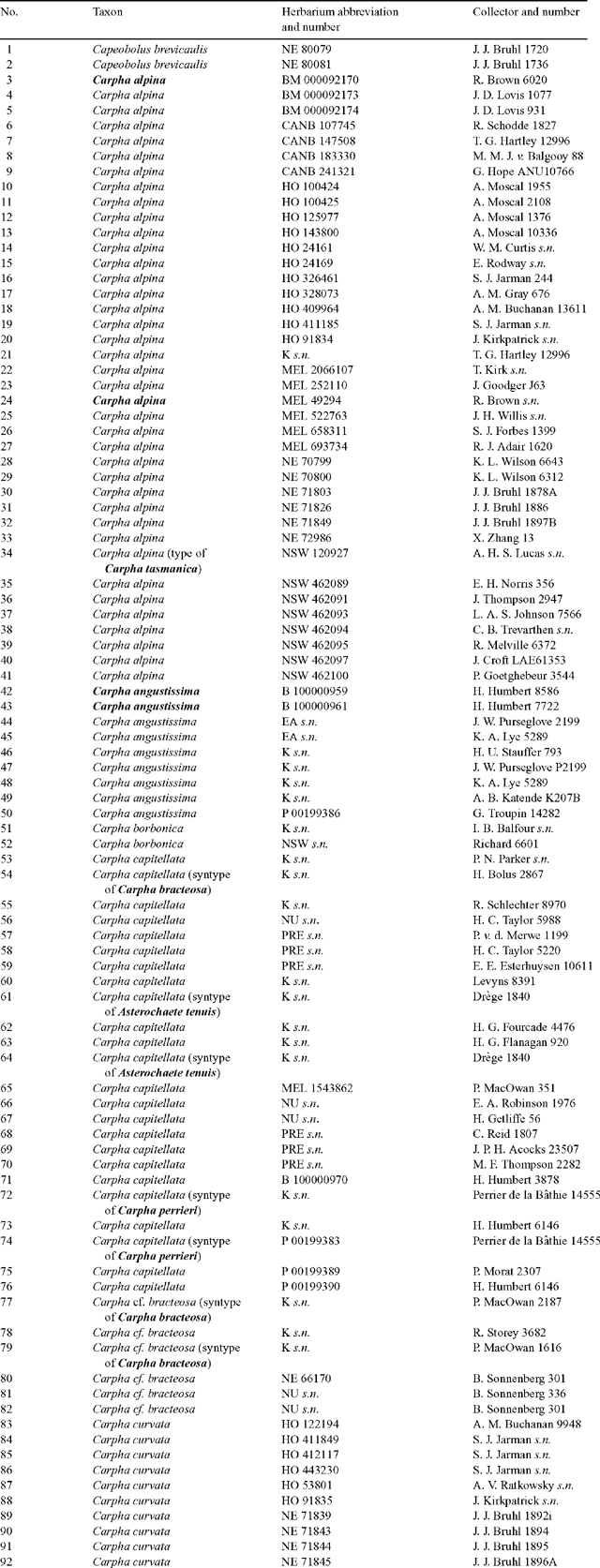
|

|
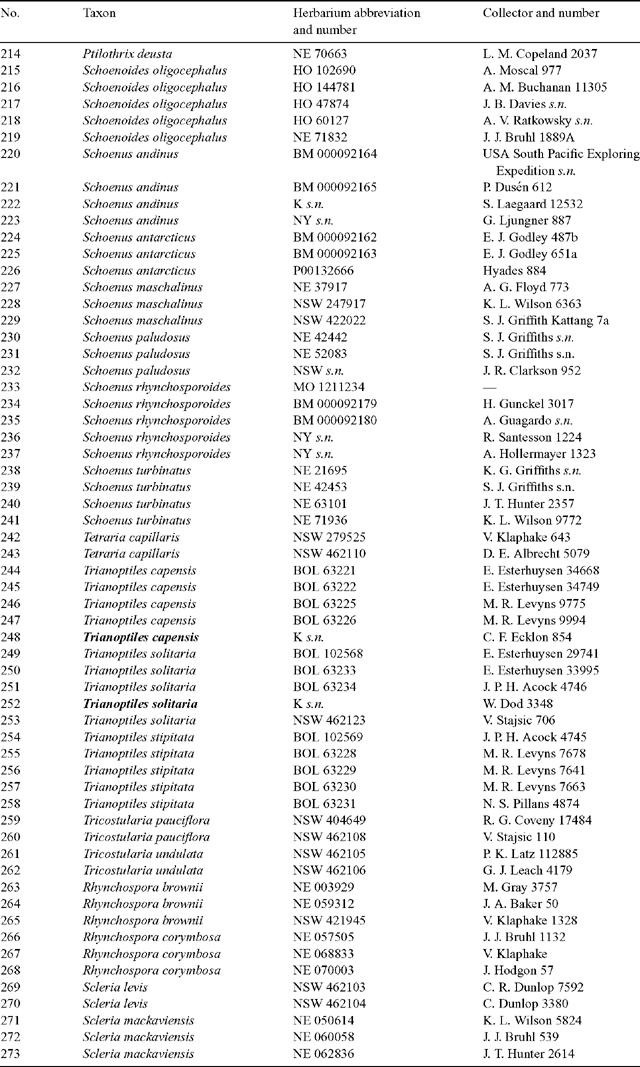
|
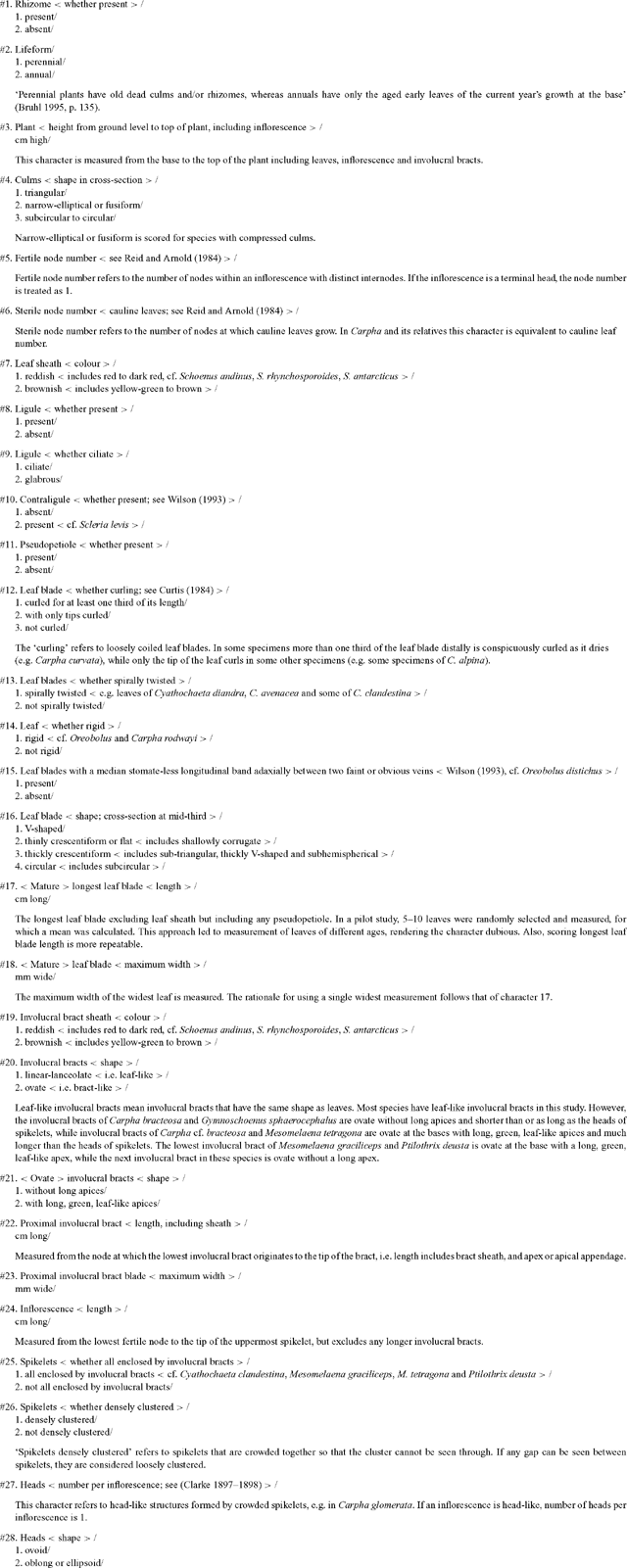
|
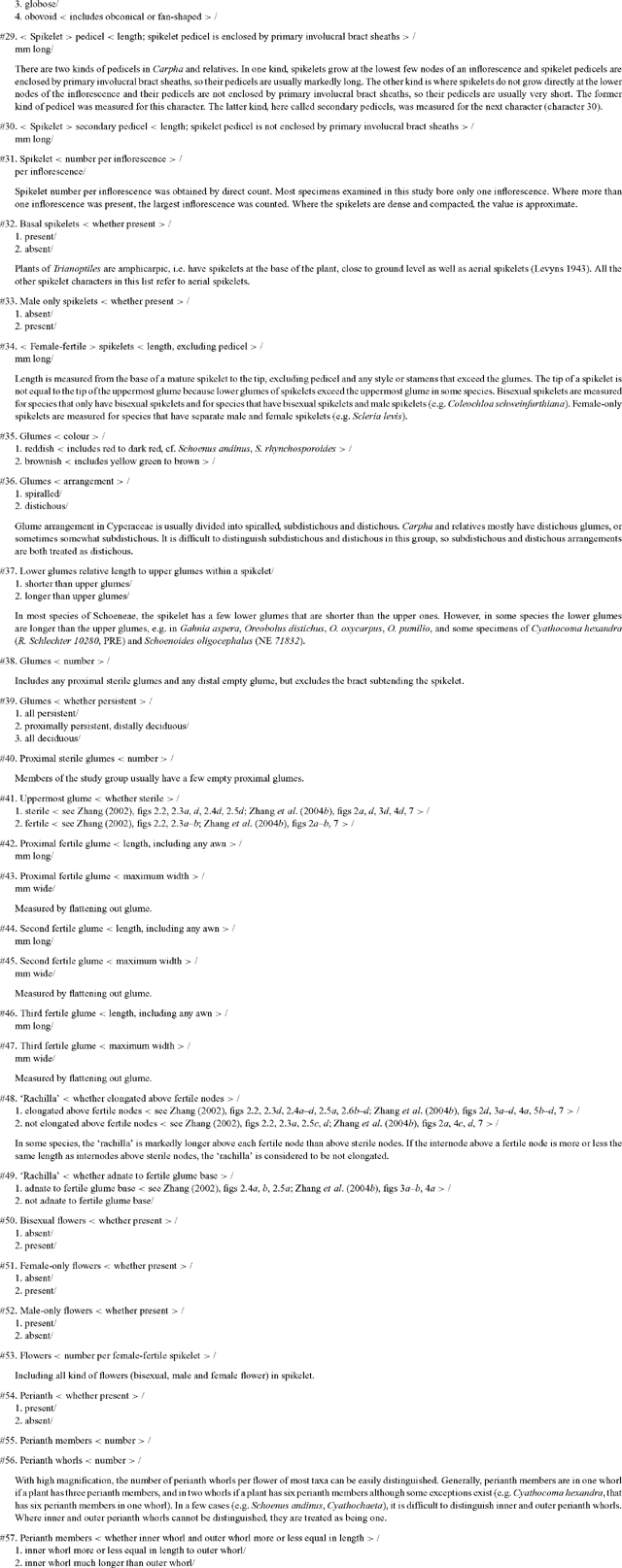
|

|


